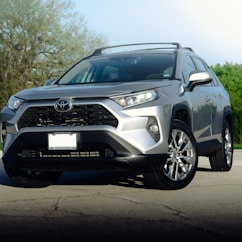Will the possible, impending UAW strike impact new & also used car values? Let’s take a look at where things stand & some potential impacts.
Something that has been on my mind a lot lately is the possible UAW strike next month. I have been wondering what it may do to a recovering new car market & a fragile used car balance. I go over the state of current supply and the potential impacts to new & used car buyers & sellers if negotiators on both sides can't find common ground soon. The storm rolls on.
Jason Herman
8/16/20234 min read
One of the topics that has been on my mind and likely on the mind of others in the industry is the impact the potential UAW strike may have on both new and used car values. There is lots of posturing going on right now between the unions and the manufactures. My gut seems to feel a strike is probably imminent this year, but I hope I am wrong. How long will it last? No one really knows.
Let’s look quickly at the current landscape. Both new and used car prices have finally started to normalize a bit for many models this year. Supply is up for new cars and relatively stable for used cars. Used cars are starting to get some traction, albeit later in the year than normal, according to the most recent COX Automotive reports. And then here comes the threat of a UAW strike and its potential impacts on GM, Ford, and Stellantis’ new car supply.
Many have speculated that some of the Big Three have purposely been building up supply (particularly, Stellantis). Please see the chart below. That may or may not be true. Some of the Stellantis over supply may be related to lack of demand from large price increases the last few years, some holding back by Dodge dealers earlier in the year with trying to hold out for over MSRP on last year challengers and chargers could be to blame with their particular oversupply issue, but Jeep and RAM have almost exceeded demand and maybe that was or wasn’t part of Stellantis’ strike preparation. The head of the UAW is a former Stellantis employee, after all, and the UAW has traditionally focused on one manufacture during these talks.
Nonetheless, there are some brands like Chevrolet & Cadillac, and even Ford to a lesser degree, that don’t have a relatively large supply of new cars. A lot of customers are still waiting for their new car orders from a while ago (maybe even up to a year or more in some cases) to come in. Selfishly, I am in that boat myself and eagerly watch the daily production numbers to see if my car will be produced soon enough to possibly escape the strike deadline in middle September (assuming it isn’t extended). For those waiting, if a strike is called, they will be waiting even longer. At some point, already impatient customers can become customers of other brands or a used vehicle.
If a strike happens, you don’t have to be a rocket scientist or historian to know that the existing supply of new vehicles goes quickly. You can bet that will quickly mean that any incentives and dealer discounts that were being reintroduced to consumers in 2023 will quickly dry up as supply of many new cars diminish, and particularly, if a strike drags on. Keep in mind, the 2019 GM strike lasted 40 days and many think this year’s negotiation will be harder fought and across more than one manufacture, so an impact to supply and prices is likely. We are also right at model year switch over time, which is when dealers are selling off remaining 2023 models and anticipating the 2024 models to arrive, which always happens a bit slowly at first.
The impact of a lasting strike impacts not only retail consumers, but fleet and rental customers, as well. Both fleet and rental have benefited greatly by the Big 3 catching up on supply in 2023, as they had been neglected as manufactures focused on meeting retail demand during the pandemic. When the strike is over, manufactures may have to swing back toward a retail focus for a bit to catch up orders again.
It is a given that new car prices likely will be firmed up again (and dreaded markups may return also with some vehicles) with a lasting strike, but what about used cars also? There is already a shortage of near new vehicles and CPO sales are having a great year because of it. Now you are potentially taking your returning new car shoppers and forcing them to look at a relatively low supply of used vehicles or potentially moving to other new car brands. It sounds like a recipe for a repeat of what happened to used car values over the last few years. Admittedly and hopefully, to a lesser degree.
The non-big three brands may get some benefit if new car buyers can’t find what they want or their orders get delayed on GM, Stellantis, and Ford vehicles, but if you look at the supply chart, these other brands really haven’t recovered to the level that the big three have. What they do have in stock likely would be reduced. The end result will put increased pressure on used car supply and likely will drive pricing up for some models. How much and for how long is anyone’s guess and is very dependent on if a strike happens first and if so, how long it lasts.
The American car consumer and fleet managers have been tested the last few years during the pandemic with reduced supply, soaring prices and dealer markups, and inflation driving up interest rates. For many Americans, a new car is now already out of reach and a used car is their only option. Any increased pressure on used car supply only exaggerates a fragile situation that is still in recovery even without a 2023 UAW strike.
Let’s hope that cooler minds and flexible negotiators are present on both sides of the table and able to work out something to avoid a strike that stands to impact a lot of lives and an industry that always seems to be weathering a storm of one sort or another. I guess that is part of what makes it so fun to be in, but it sure keeps you on your toes if you are in the business of selling new or used cars.






